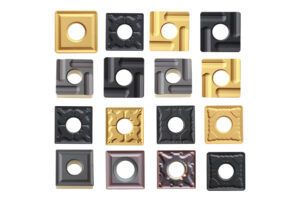Unleashing Precision and Efficiency with CNC Cutting Technology

CNC (Computer Numerical Control) cutting is a revolutionary technology that has transformed the manufacturing industry. Thanks to its precise and efficient capabilities, it has become a cornerstone of modern fabrication processes. This article aims to provide an in-depth understanding of CNC cutting, its benefits, various applications, and key factors for successful implementation.
1. Understanding CNC Cutting:
It is a versatile machining process that utilizes computer-controlled machines equipped with cutting tools to remove material from a workpiece. Unlike traditional manual cutting methods, CNC cutting offers higher precision, repeatability, and automation, enabling manufacturers to achieve intricate designs and complex geometries with ease.
2. Advantages:
2.1 Exceptional Precision: The cutting technology allows for highly accurate cuts with tight tolerances, ensuring superior product quality and consistency.
2.2 Increased Efficiency: By automating the cutting process, CNC machines deliver faster production rates, reduced waste, and improved overall efficiency.
2.3 Versatility: it can be applied to a wide range of materials, including metals, plastics, composites, wood, and more, making it suitable for various industries and applications.
2.4 Complex Geometries: It enables the fabrication of intricate and complex shapes, allowing manufacturers to create custom parts and components that meet specific design requirements.
3. Applications:
3.1 Manufacturing Industry: It is extensively used in the manufacturing sector for producing precision parts, prototypes, molds, and dies. It enables efficient mass production while maintaining quality and accuracy.
3.2 Automotive Industry: CNC cutting technology is employed to manufacture automotive components, such as chassis parts, body panels, interior trim, and custom exhaust systems. It ensures precise fitment, structural integrity, and aesthetic appeal.
3.3 Aerospace Industry: It plays a crucial role in aerospace manufacturing, where it is used for producing aircraft parts, turbine blades, wing components, and structural elements. It ensures high strength, low weight, and aerodynamic efficiency.
3.4 Signage and Advertising: It is widely utilized in the signage and advertising industry to create intricate designs, letters, logos, and decorative elements from various materials, including acrylic, wood, and aluminum.
3.5 Architectural and Construction Industry: This technology is leveraged in architectural and construction projects to fabricate customized components, decorative panels, and precision structural elements. It enables efficient and accurate construction processes.
4. Critical Factors for Successful CNC Cutting:
4.1 Machine Selection: Choosing the right CNC cutting machine based on the specific material and application requirements is crucial for optimal results. Factors such as cutting force, size, accuracy, and compatibility should be considered.
4.2 Tooling and Cutting Parameters: Selecting appropriate cutting tools, such as end mills, routers, or lasers, and optimizing cutting parameters like speed, feed rate, and depth of cut, are essential for achieving desired outcomes.
4.3 CAD/CAM Software: Utilizing advanced CAD/CAM software allows engineers to design the cutting path and generate efficient toolpaths. This software also enables simulation and optimization, ensuring error-free operations.
4.4 Material Handling and Fixturing: Proper material handling, clamping, and fixturing techniques ensure stability and accuracy during the cutting process. Securely holding the workpiece minimizes vibrations and potential errors.
4.5 Maintenance and Training: Regular maintenance of CNC cutting machines, including tool inspection, lubrication, and calibration, is critical for sustained performance. Additionally, providing operators with proper training enhances their efficiency and ensures safe operation.
Conclusion:
CNC cutting technology has revolutionized the manufacturing industry, enabling precise, efficient, and versatile fabrication processes. Its ability to deliver intricate designs, complex geometries, and superior quality make it indispensable across various sectors. By understanding the principles, benefits, and key factors associated with CNC cutting, manufacturers can unlock its full potential to streamline production, reduce costs, and meet customer demands in today’s competitive market.
Note: This article provides a general overview of CNC cutting and is not an exhaustive guide. Manufacturers should consult with experts and machine-specific documentation for detailed information and best practices.






